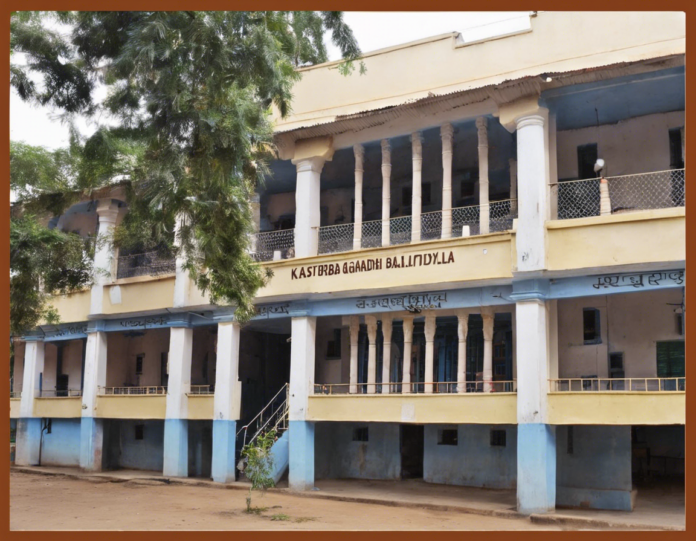Introduction:
Kasturba Gandhi Balika Vidyalaya (KGBV) is a government scheme in India aimed at providing quality education to girls from marginalized communities. The program was launched in 2004 to promote girls’ education and bridge the gender gap in literacy rates. KGBVs are residential schools that offer free education, vocational training, and life skills development to empower girls and enable them to break the cycle of poverty and discrimination. This article serves as a comprehensive guide to KGBVs, highlighting their importance, objectives, implementation, and impact on girls’ empowerment.
Importance of KGBVs:
– Gender Equality: KGBVs play a crucial role in promoting gender equality by providing girls with access to education and equal opportunities for growth and development.
– Empowerment: Empowering girls through education helps them make informed choices, improve their social status, and become self-reliant individuals.
– Poverty Alleviation: Education empowers girls to escape the cycle of poverty by increasing their earning potential and improving their overall quality of life.
– Community Development: Educated girls contribute to the socio-economic development of their communities by becoming agents of change and progress.
Objectives of KGBVs:
– Enrollment: Encouraging girls from disadvantaged backgrounds to enroll in schools and complete their education.
– Retention: Ensuring that girls stay in school by providing a conducive learning environment and support services.
– Quality Education: Offering a quality education that focuses on holistic development, including academic, social, and emotional growth.
– Life Skills: Equipping girls with essential life skills such as communication, leadership, and problem-solving to navigate the challenges they face.
– Vocational Training: Providing vocational training to enhance girls’ employability and entrepreneurial skills for economic independence.
Implementation of KGBVs:
– Target Groups: KGBVs target girls from marginalized communities, especially Scheduled Castes, Scheduled Tribes, and Other Backward Classes, who face barriers to education.
– Residential Facilities: KGBVs offer residential facilities to ensure a safe and supportive environment for girls, particularly those from remote or insecure areas.
– Curriculum: The curriculum at KGBVs focuses on academic subjects, vocational skills, extracurricular activities, and life skills training to provide a well-rounded education.
– Teachers: Trained female teachers and support staff are appointed to create a nurturing and empowering learning environment for the students.
– Community Involvement: KGBVs involve parents, communities, and local authorities in the management and monitoring of the schools to ensure their sustainability and effectiveness.
Impact of KGBVs:
– Increased Enrollment: KGBVs have significantly increased the enrollment of girls in schools, especially in underserved and marginalized communities.
– Improved Academic Performance: Girls enrolled in KGBVs show improved academic performance, leading to higher completion rates and better prospects for higher education.
– Enhanced Life Skills: KGBVs equip girls with essential life skills that help them navigate challenges, make informed decisions, and lead independent lives.
– Empowerment: KGBVs empower girls to challenge gender norms, advocate for their rights, and pursue their aspirations with confidence and determination.
Frequently Asked Questions (FAQs):
1. What is the eligibility criteria for girls to enroll in KGBVs?
– Girls from disadvantaged backgrounds, especially SC, ST, and OBC communities, aged 10-14 years, are eligible for enrollment in KGBVs.
- Are KGBVs only for residential students?
-
Yes, KGBVs are residential schools that provide accommodation, food, and other essential services to ensure a conducive learning environment for girls.
-
Do KGBVs offer vocational training?
-
Yes, KGBVs offer vocational training in various skills such as tailoring, computer literacy, agriculture, healthcare, and entrepreneurship to enhance girls’ employability.
-
How are KGBVs funded and managed?
-
KGBVs are funded by the government and managed by state education departments in collaboration with NGOs, community organizations, and local authorities.
-
What are the outcomes of girls who graduate from KGBVs?
-
Graduates of KGBVs have shown improved academic performance, higher levels of confidence, enhanced livelihood skills, and increased community involvement post-education.
-
How can individuals support KGBVs and girls’ education?
-
Individuals can support KGBVs by volunteering, donating resources, advocating for girls’ education, and promoting awareness about the importance of gender equality in education.
-
Are there any success stories or case studies from KGBVs?
-
Yes, there are numerous success stories and case studies highlighting the transformative impact of KGBVs on girls’ lives, communities, and society at large.
-
How do KGBVs address the specific needs and challenges faced by girls from marginalized communities?
-
KGBVs address the specific needs of girls from marginalized communities by providing tailored support, mentorship, life skills training, and a safe learning environment that fosters their holistic development.
-
What is the role of parents and communities in supporting girls’ education through KGBVs?
-
Parents and communities play a vital role in supporting girls’ education by encouraging enrollment, actively participating in school activities, and advocating for girls’ rights and empowerment.
-
How can the impact of KGBVs be measured and evaluated?
- The impact of KGBVs can be measured through indicators such as enrollment rates, academic performance, completion rates, girls’ empowerment levels, community engagement, and long-term socio-economic outcomes.

